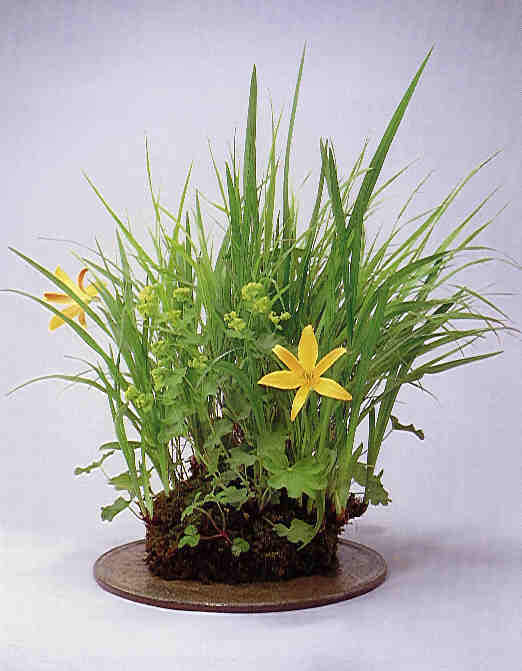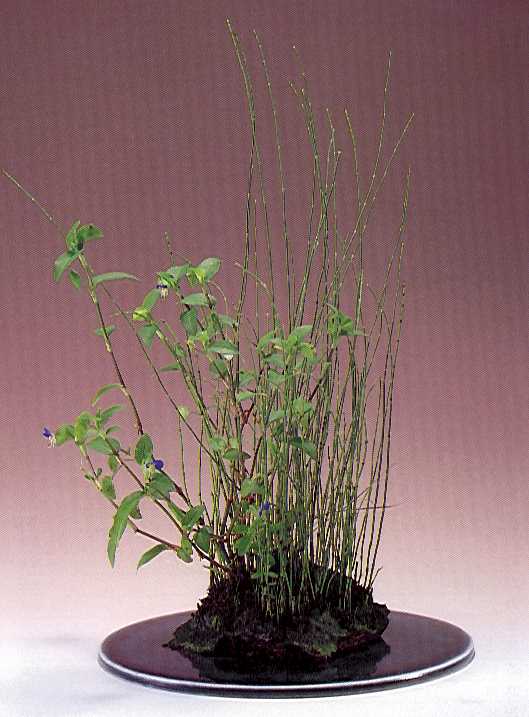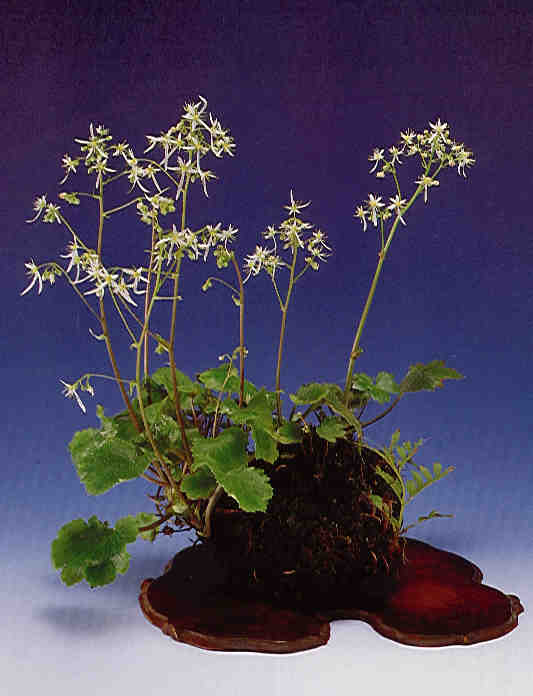Nearai
Nearai ist ein Begriff, der noch nicht sehr bekannt ist bei uns, aber in der Kusamono-Welt eine wichtige Rolle spielt. Sehr oft werden Kompositionen nicht in einer Schale präsentiert, sondern auf einem Untersatz.
Nearai is a term that is not yet so common here, but in the kusamono-cosmos it is an important part. Very often kusamonos are not displayed in a pot but rather on a tray.

Ne = Wurzel, arai = gewaschen, ausgewaschen
Die Pflanzen werden vorerst in einer Schale kultiviert. Wenn die Schale gut durchwurzelt ist, nimmt man die Pflanze aus der Schale und stellt sie auf einen Untersatz. Dieser Untersatz kann eine Keramikplatte, ein Glasuntersatz, ein Teller sein. In dieser Form wird die Pflanze dann weiterkultiviert.
Bei dieser Kultivierungsart entfällt auch das jährliche Umtopfen.
Im Gegensatz zu Kokedama wird hier kein Moos aufgelegt, sondern man lässt der Natur ihren Lauf – das Moos wird sich über kurz oder lang ansiedeln, und zwar in natürlicher Form.
Ne = Root, arai = washed, washed out
The plants are cultivated in a pot. When the pot is full of roots you remove the plant and put in on a tray. This tray can be made of ceramics, glass, stone . Like this the plant is cultivated in the future. Repotting is no longer necessary. Let it grow like this – sooner or later it will be covered by moss in a very natural way (there is no need to put it there). Nearai compared to Kokedama is an already more matured planting.





Equisetum oder Typha minima pflanzt man am besten in einen Suiban (rechteckige oder ovale Schale ohne Abzugslöcher).